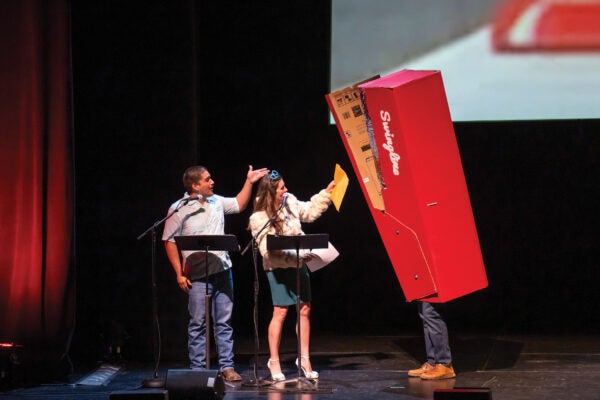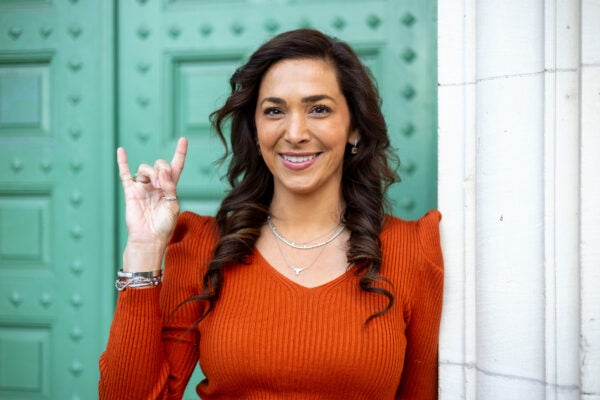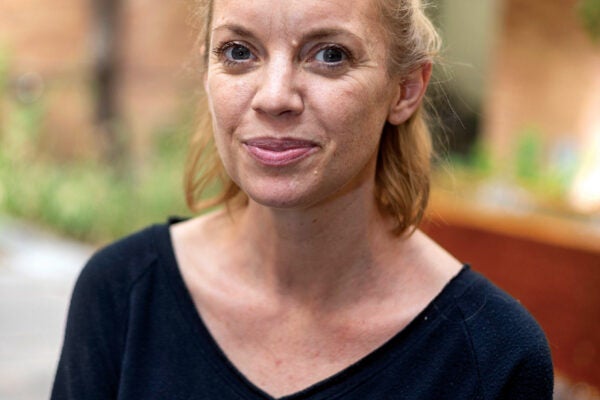“Is this what I want to say I did for a living?” If you have asked yourself that question, and the answer has been, “not so much,” Art Markman and his team at UT might have some ideas for you.
After wearing many hats (he’s something of an expert on career agility himself), Markman now is UT’s vice provost for continuing and professional education and new education ventures. (He knows the title is a mouthful and calls the latter part his “weasel words,” which allow him space to explore a host of new possibilities.)
If in the past few months you searched for “UT Austin” and “continuing education,” you would have found something called Texas Extended Campus. If you had clicked, it would have shown 11 different centers in places such as the Law School, the McCombs School of Business, the Cockrell School of Engineering and the College of Pharmacy. Some of these are executive education degree programs, but many are one-day seminars, four-day certificate programs or six-week boot camps in something that reorients one’s career path. Some offerings are purely for the love of learning. UT serves about 75,000 people a year across all its continuing education programs.
It’s no longer the case that you exit college, go into a particular profession, and then stick with that profession for the next 40 years.
So what’s to improve on? For one thing, sheer volume. Markman would like those 75,000 to become 115,000 in the next five years. Why? Americans are changing jobs 11 or more times over the course of their careers and even changing careers several times. “It’s no longer the case that you exit college, go into a particular profession, and then stick with that profession for the next 40 years,” Markman says. “We’re seeing lots of people making pivots, and it’s not just the 25-year-old who decides they want to do something different. It’s people in their 40s who want to take a new direction. It’s people in their 60s thinking, ‘I enjoyed that first career, but there’s another contribution I want to make.’”
What’s more, the population of Texas is predicted to balloon over the next 20 years from 29 million to more than 40 million. “The flagship university of the state has to be an essential part of making sure all of those people are able to contribute in the way that they want to,” Markman says. “Education isn’t just for traditional students. It’s also for people changing careers and people who have discovered that their career path requires a new set of skills. We should be part of the ecosystem that’s providing that.”
To increase UT’s continuing education enrollment that much, it will be necessary to organize better and present a more unified face to the public.
In the house where Markman grew up, there still hangs a needlepoint of a lion he made when he was 9. “The front of it looks, you know, like a lion, and the back of it is this unholy mess of yarn going all over the place, from one patch to another that required the same color of yarn.” Markman says that the way UT sometimes presents itself to the public, because of its decentralized structure, reminds him of the messy back of a needlepoint. “Part of what we’re trying to do is to help turn that around and show the Longhorn on the front.”
Markman says UT’s decentralized structure is good in a lot of ways because it lets units try things without feeling as if they have to clear them with the many layers of bureaucracy. “The danger in that system is that when we have to present a public face to the world, we often don’t do it well.” So the first step has been organizing the online gateway by asking visitors if they’re interested in a degree or nondegree program and in what field.
A second focus is on better coordination. For example, UT has a concerted effort to work with members of the military to enhance their career prospects — soldiers who are looking to get more education while on active duty, are transitioning from military to civilian life, or are veterans. “The watchword here is coordination. We want to learn from others’ successes and not create programs that might slip through the cracks between those silos.”
To plug those gaps and better connect the units, the group known as Texas Extended Campus, about 75 people who report up to Markman, has changed its name to Extended Education Ventures. This self-funded “auxiliary unit” includes the Thompson Conference Center, the Campus Testing Center, Informal Classes, and programs aimed at older adults within UT’s Osher Lifelong Learning Institute: LAMP, Nova, Sage, Quest, and Forum. UT High School has been moved to the College of Education, “where it makes more sense,” Markman says.
Markman has refocused this unit’s efforts on supporting new continuing and professional education across campus. The core groups within Extended Education Ventures, who work in the UT Administration Building at 1616 Guadalupe St., focus on marketing and public relations, student service, IT support, the handling of the money and business development.
Colleges and schools that have been offering continuing and professional education for years, such as business, education, engineering and liberal arts, have had enough runway to get established, staff up and advertise their programs. Now, the expertise that Extended Education Ventures has in running these kinds of programs is being directed at helping to launch new programs. “We’re going to be working with the School of Social Work to build an online Option 3 master’s program to complement their in-person programs. We’re working with the College of Fine Arts to relaunch some of their design-thinking programs. The aim is to provide additional service to units that want to spin new things off so that they don’t have to hire their own staff to do it. Their faculty and experts can focus on what they do best — thinking about what they want to teach and how they want to teach it. We can focus on the details of how to get people there, and when they do show up to the class, how do we make sure they have a good experience?”
To read the full article, visit news.utexas.edu/2022/03/08/to-be-continued.



